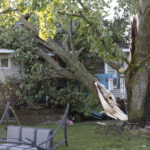Top federal safety officials urged the Labor Department in 2006 to adopt critical regulations to prevent deadly dust explosions– like the one suspected in the deadly blast in a Georgia sugar plant last Thursday– but the government has failed to do so.
In the past 28 years, about 300 dust explosions have killed more than 120 workers and injured several hundred others in sugar plants, food processors, and many industrial and wood manufacturers. Most are preventable by removing fine-grain dust as it builds up, experts say.
But that has not been required by the Occupational Safety and Health Administration, which is part of the Labor Department. The U.S. Chemical Safety Board, which investigates industrial accidents, concluded in a report in 2006 that OSHA had no comprehensive regulation to prevent dust explosions and that its program “inadequately addresses” the problem.
A 20-year-old OSHA dust regulation aimed only at grain plants and silos is effective, the safety board said, and shows why regulations are needed for other companies.
OSHA officials said they began stepped-up enforcement on dust issues in October, but other safety officials say that’s not enough and that detailed dust safety regulations are needed.
“This is an extremely dangerous component that is not regulated,” former safety board chairwoman Carolyn Merritt told The Associated Press. Dust explosion situations “are so dangerous that people have got to pay attention to this. There should be an outcry.”
Minuscule dust particles– the smaller the more explosive- often form clouds in enclosed places like manufacturing plants or sugar mills. These clouds are the perfect fuel for a fire that can be set off by any spark or form of ignition. The first explosion kicks up more dust and even more and bigger explosions follow in rapid succession, said C. James Dahn, president of Safety Consulting Engineers of Schaumburg, Ill., and an expert on the topic.
“The biggest problems we have in plants is that people are not aware of the amount of dust that’s in their plant,” Dahn said. “I’ve walked into plants where dust is nearly half a foot deep and people are saying, ‘It’s just dust, we don’t worry about it.’ They did when it blew the plant apart. Dust can be an explosive hazard.”
Two California Democrats in Congress who serve on labor panels, George Miller and Lynn Woolsey, wrote the labor secretary Friday, saying, “a mandatory combustible dust standard should be a high priority of OSHA. … We strongly urge you to act now.”
By law OSHA was supposed to respond within six months to the safety board’s November 2006 recommendations to adopt a mandatory regulation. Except for a letter a year ago acknowledging receipt of the report and its recent special enforcement emphasis, it has not done so, officials said.
Merritt, who was appointed in 2002 by President Bush and left the board last year, said she and her colleagues repeatedly pressed OSHA to do something.
“There really isn’t a lot of excuse,” she said. “The question is why are they hesitant to write new regulations when it’s been proven — when our special study has shown — how serious it was and how many fatalities there were.”
OSHA has not ignored the issue, said agency spokesman Mike Wald. In October 2007 it adopted a “national emphasis” on enforcement of safety concerns related to dust.
Wald said compliance officers were visiting plants, checking on it, and using existing regulations.
However, Merritt and other safety experts say those regulations aren’t specific enough.
Because accidents are continuing “it shows that whatever we’re doing right now doesn’t appear adequate,” said Guy R. Colonna, an official with the National Fire Protection Association.
That organization drew up voluntary guidelines 85 years ago along with other building safety standards to guard against fires. Many companies and cities have adopted NFPA’s standards, which the chemical safety board said are effective.
Dust explosions have been around for more than a century, including a sugar mill explosion in Chicago in 1890 that killed 11 people. In 1985, OSHA officials even met with the Georgia plant’s owners at the time and told Congress that powdered sugar and other food dust “are considered to be ‘strong’ explosion hazards.” Just last year downtown Baltimore was rocked when a Domino sugar refinery had a dust explosion.
Three major explosions at a variety of plants in 2003 prompted the safety board to study the issue and make its recommendations.
___
On the Net:
The Chemical Safety Board’s 2006 report:
http://www.csb.gov/completed_investigations/docs/Dust%20Final%20Repo rt%20Web
site%2011-17-06.pdf
The National Fire Protection Association:
http://www.nfpa.org/
Topics Legislation Workers' Compensation
Was this article valuable?
Here are more articles you may enjoy.


 WTW to Acquire Newfront in Deal Worth Up to $1.3B
WTW to Acquire Newfront in Deal Worth Up to $1.3B  One of Highest Property Claims Severity Recorded in Q3 on Low Volume, Says Verisk
One of Highest Property Claims Severity Recorded in Q3 on Low Volume, Says Verisk  Dunkin’ Cashier in Georgia, Stabbed by Rapper, Can’t Claim More Than Workers’ Comp
Dunkin’ Cashier in Georgia, Stabbed by Rapper, Can’t Claim More Than Workers’ Comp  Acrisure CEO Greg Williams Makes $400M Commitment to Michigan State University
Acrisure CEO Greg Williams Makes $400M Commitment to Michigan State University 

